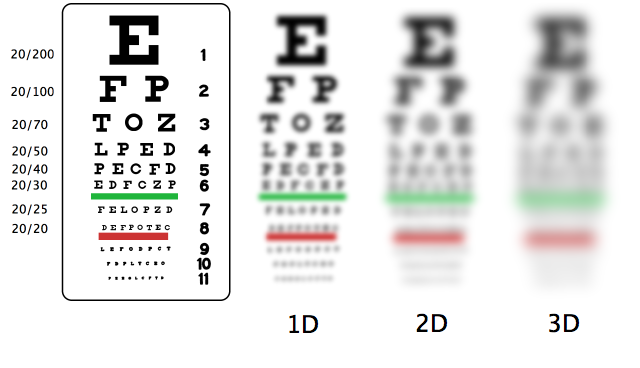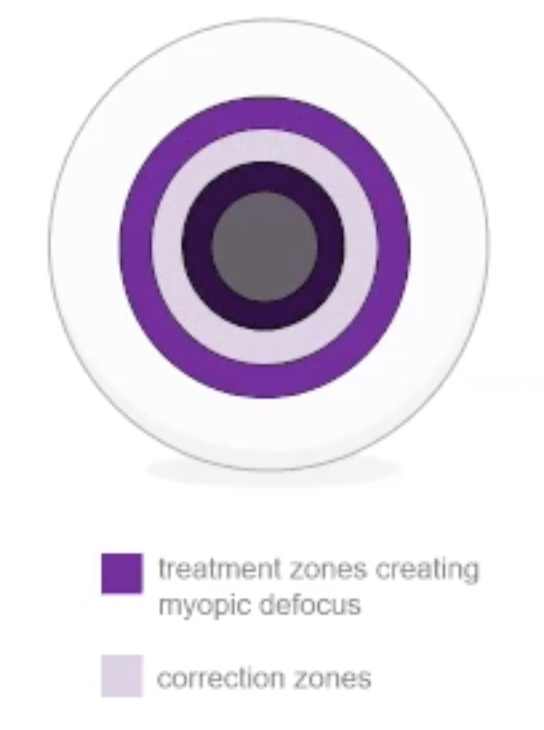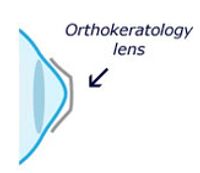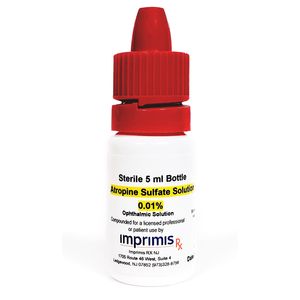Myopia Control Treatment in Flower Mound
Is your child's nearsightedness getting worse every year? PersonalEyes Vision Care in Flower Mound, Texas specializes in myopia control therapy to slow or stop childhood myopia progression. Dr. Kumar Patel, Denton County's first certified provider in CooperVision's Brilliant Futures Myopia Management Program, offers FDA-approved treatments to protect your child's vision future.
Myopia affects nearly 30% of the world's population and is rapidly increasing. By 2050, experts predict 50% of people will be myopic. Early intervention with proven myopia control therapy can reduce progression by 50% or more, significantly lowering your child's risk of serious eye diseases later in life.
Understanding Myopia (Nearsightedness)
Myopia, also called nearsightedness, is the inability to see things clearly when viewing in the distance. Myopia develops when the length of the eyeball progressively becomes longer from front to back, which causes light to focus in front of the retina rather than directly on it.
This is the most common refractive error among children and young adults. While glasses and contact lenses can correct blurry distance vision, they cannot stop your child's vision from continuing to deteriorate without proper myopia control therapy.

Critical Warning: In our experience, children are often afraid to complain about vision problems due to fear of getting in trouble or having electronic devices taken away. Regular eye exams are essential.
The Growing Myopia Pandemic
Myopia, now considered a pandemic, is becoming increasingly prevalent worldwide. A recent study shows that close to 30% of the world's population is currently myopic. By 2050, experts estimate that nearly 50% of the global population will be myopic, with nearly 1/5th at risk for blindness.
This means out of approximately 10 billion individuals, 5 billion will have myopia and 1 billion will be at risk for blindness regardless of age! The statistics are particularly alarming in children and young adults.

Alarming Statistics from China:
- Elementary Students: 10-20% are myopic
- High School Students: 50% are myopic
- College Students: 90% are nearsighted
- Severe Cases: 10-20% have sight-threatening pathologic myopia
Take Control: With Myopia Control Therapy, you have the power to protect your children from landing on the wrong side of these statistics. The goal is to slow or even stop the progression of nearsightedness.
Causes and Risk Factors for Myopia
Optometrists have experienced exponential growth of progressive myopia cases in children and young adults. Contributing factors include long periods of reading or digital device usage, lack of outdoor activities and sun exposure, parental history of myopia, and genetic predisposition.
As children grow, myopia progression can occur quite rapidly. Dr. Patel typically recommends high-risk children be seen every 6 months to monitor progression rates. The earlier therapy is started, the better the long-term outcome!

Primary Risk Factors
- Asian or Hispanic descent
- One or both parents myopic
- One or more siblings myopic
- Sleeping less than 7 hours per night
Environmental Factors
- Less time spent outdoors
- Excessive near work activities
- Extended digital device usage
- Early onset of myopia (before age 6)
The Serious Dangers of Untreated Myopia
Studies show there is more to worry about with myopic eyes than ever before. Scientific research has proven that as myopia rapidly progresses, individuals have significantly increased long-term risks for serious eye conditions that can threaten vision and quality of life.
Serious Complications Include:
- Retinal Detachment - Over 50% of non-trauma cases linked to myopia
- Myopic Maculopathy - Damage to central vision
- Macular Degeneration - Leading cause of vision loss
- Glaucoma - Silent thief of sight
- Cataracts - Earlier onset and more severe
Retinal Detachment Risk by Myopia Level:
- Mild Myopia (-0.25 to -3.00): 4x higher risk than normal eyes
- Moderate Myopia (>-3.25): 10x higher risk
- Severe Myopia (>-6.00): 20 to 80 times higher risk!
Advanced Myopia Control Treatment Options
Over the last ten years, highly effective methods to slow down and even halt myopia progression have transformed children's lives. Dr. Patel, specializing in myopia control, uses the latest methods and can decrease progression by an average of 50% or more, significantly reducing long-term risks.
MiSight® 1 Day Contact Lenses
Dr. Kumar Patel is Denton County's FIRST certified provider in CooperVision's Brilliant Futures Myopia Management Program. MiSight lenses are the most comfortable option for myopia control devices.
These daily disposable lenses are inserted in the morning and discarded at bedtime, making them convenient and hygienic for children while effectively reducing myopia progression.

Ortho-K (Orthokeratology)
One of the most universally effective methods for controlling myopia. Children sleep with specially designed rigid gas permeable lenses that gently reshape the cornea overnight.
Upon waking, the child removes the lens and enjoys clear vision throughout the day without glasses or contacts, while the treatment continues to slow myopia progression.

Low-Dose Atropine Eye Drops
A pharmaceutical solution with over 150 years of history in treating pediatric myopia. In extremely low doses, atropine slows myopia progression by about 50% without dramatic side effects.
While effective, this therapy requires consistent daily application, and some children may experience mild burning or stinging with the drops.

Important Note: Other options such as bifocal or progressive lenses exist but have only 25% success rates, which does not meet our office standards for effective myopia control.
Start Being Proactive Today!
While professional myopia control therapy is most effective, these lifestyle modifications can help slow progression and support your child's overall eye health. Implementing these habits alongside professional treatment maximizes success.
Five Habits to Slow Myopia Progression:
- Outdoor Activities: Spend 90 minutes or more each day outdoors in sunlight
- Reduce Digital Screen Time:
- Toddlers (6-24 months): No screen time recommended
- Preschoolers (3-5 years): Maximum 1 hour daily
- Elementary (6-10 years): Maximum 2 hours daily
- Middle School (11-13 years): Maximum 4 hours daily (including schoolwork)
- Proper Reading Distance: Hold reading material at least 13-16 inches away from eyes
- Follow the 20-20-20 Rule: Every 20 minutes, look 20 feet away for at least 20 seconds
- Adequate Sleep: 9-12 hours/day for ages 6-12, 8-10 hours/day for ages 13-18
Protect Your Child's Vision Future
Don't wait for your child's myopia to worsen. Schedule a comprehensive myopia evaluation with Dr. Kumar Patel to explore proven treatment options that can change your child's visual future.
Frequently Asked Questions About Myopia Control
At what age should myopia control treatment begin?
The earlier treatment begins, the better the outcomes. Dr. Patel can start myopia control therapy as young as 6-8 years old, depending on the child's maturity and the treatment method selected.
How effective is myopia control therapy?
Clinical studies show that proper myopia control therapy can slow progression by 50% or more. Dr. Patel monitors each child every 6 months to track progress and adjust treatment as needed.
Are these treatments safe for children?
Yes, all myopia control treatments offered at PersonalEyes Vision Care are FDA-approved and have excellent safety profiles when properly managed by experienced practitioners like Dr. Patel.
How long does treatment continue?
Myopia control treatment typically continues until the late teens when eye growth stabilizes. Dr. Patel will monitor your child's progress and adjust the treatment plan as they mature.
PersonalEyes Vision Care
2600 Lakeside Parkway, Suite 180
Flower Mound, Texas 75022
Serving Flower Mound, Grapevine, Lewisville, and surrounding DFW communities
Learn more about our comprehensive eye care services or read about Dr. Kumar Patel's myopia control expertise.
Reading time: 7 minutes
Last updated: May 27, 2025
